One-room prefab house by Jean Prouvé on sale at Design Miami for $2.5m
A rare prefabricated one-room house designed by Jean Prouvé in 1945 is on sale at Design Miami for $2.5 million. Update: this interview is featured in Dezeen Book of Interviews, which is on sale now for £12 (+ movie + interview).
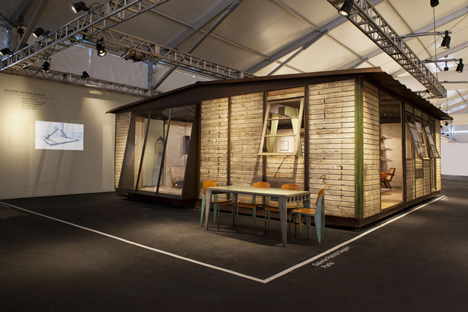
The Maison Démontable 8x8, presented at the fair by Galerie Patrick Seguin, is one of only two surviving examples of the house, which Prouvé developed to help France house its population after the destruction of World War II.
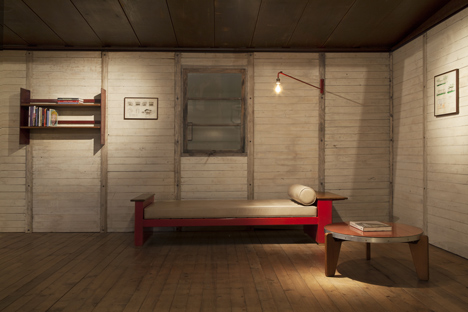
“There was a programme of 160 houses, but few of them were built and most of them were destroyed after the war,” said Patrick Seguin. “One [is at] the atelier of Jean Prouvé, next to his house. It's classified as a historical monument. So this is the second one; the only other one that exists.”
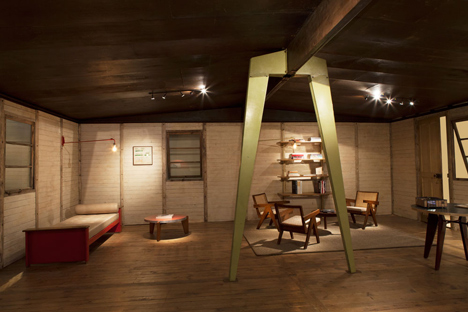
The house, which features timber panels mounted on a freestanding axial portal frame made of folded steel, was one of many experimental prefabricated dwellings that Prouvé worked on. The components could be packed onto a single truck and assembled by three people in one day.
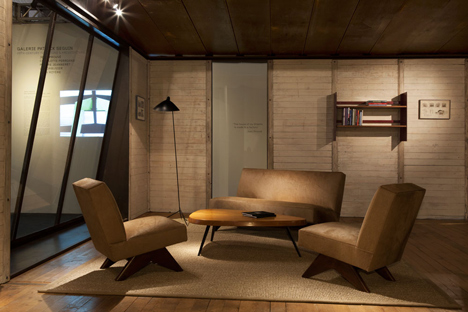
The 8x8 metre dwelling is presented at the Design Miami fair with an interior of original Prouvé furniture and fittings from Seguin’s collection.
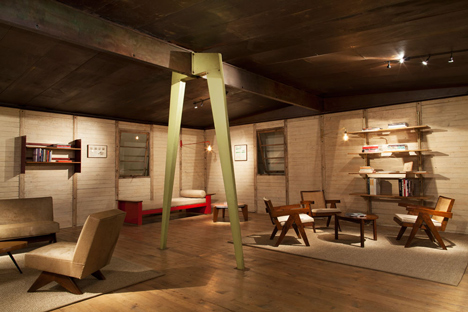
Prouvé is one of the most important architects and designers of the mid twentieth century. The self-taught architect, designer and engineer was born in Nancy, France in 1901 and died in 1984. He pioneered the use of lightweight folded steel in both furniture and architecture and experimented with lightweight, demountable structures that were ahead of their time.
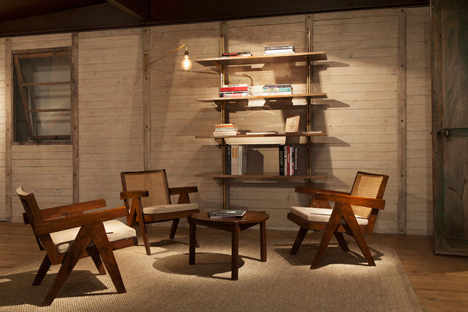
“Before Prouvé, Modernism was [bent steel] tubes,” said Seguin, who is the world’s leading dealer of original Prouvé objects. “He was thinking about ecology even before the term existed."
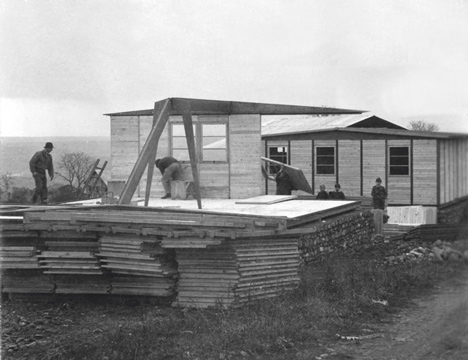
Seguin added: "Prouvé wrote that architecture should leave no trace on the landscape. Prouvé is now recognised as the most important architect-engineer of the mid-twentieth century.”
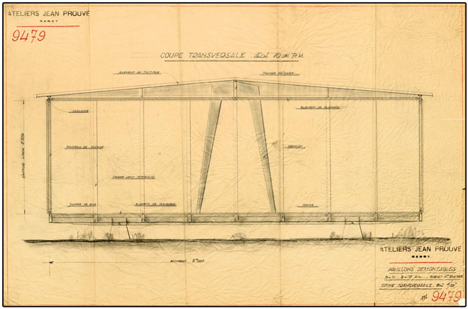
The Design Miami collectors fair ends today. A house designed by Prouvé's contemporary, the French architect and designer Charlotte Perriand, is also in display in Miami this week.
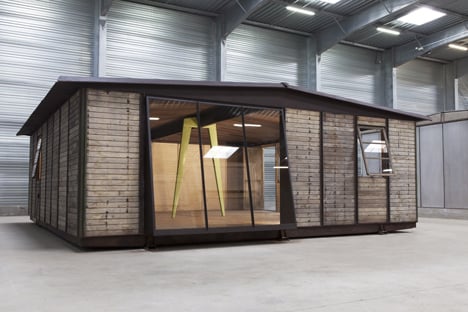
Here's an interview conducted with Patrick Seguin at Design Miami this week:
Marcus Fairs: Tell us a little bit about the house that you're exhibiting here at Design Miami.
Patrick Seguin: First of all, the context. In 1944 or 1945, after the war, Prouvé - a visionary, a great human person, a very generous person - said "I can help the French government with the reconstruction".
At the time we had a reconstruction ministry in France. But for the the first year and a half after the war most of the work was to get rid of the rubble from the bombings. Nothing was rebuilt before 1946.
So Prouvé came up with this idea. He said "the solid will never compete with the hollow". [Tapping the folded-steel "compass" structure that supports the roof truss]. It's hollow. Prouvé had a gigantic [metal] press and he introduced this technology to build a house in a factory that had been used to build planes or cars.
But there was a lot of reticence after the war towards industry. Prouvé was pro-industry. He said "three people can build this house in one day". Prouvé had this factory with 300 employees in Nancy in the east of France that was hardly damaged by the bombings. So he said "I'll prefab wooden houses in my factory". They could send three trucks a day, each with a team of three people, and three families could get a house in one day. It was genius.
There was a programme of 160 houses, but few of them were built and most of them were destroyed after the war. They were reused. There was a lack of everything, of metal, aluminium, wood. So people used the wall panels as tables, they used the steel to repair tractors.
Marcus Fairs: How many of these are surviving?
Patrick Seguin: There's two houses like this. One was the atelier of Jean Prouvé, next to his house. Prouvé had it as his office, his studio. It's been protected by the French government. It's classified as a historical monument. So this is the second one; the only other one that exists.
If you look at it, it's just fantastic. The house comes in ten crates. You open the crate, build the floor, the compass is freestanding, each piece can be moved by hand by two people. We built this in two days. The 6x6 version can be built in one day. You fix the compass, bolt the cross-beam… Everything is less than 10 kilos, it's very light. It's extremely easy, very simple.
Marcus Fairs: Did the house come in different sizes?
Patrick Seguin: Yes. I have 17 of these houses in my two warehouses in Nancy. From the 6x6 metre versions up to the 24x8 metre versions.
Marcus Fairs: How important was Prouvé?
Patrick Seguin: I think Prouvé is essential. Before Prouvé, Modernism was tubes. He had this huge press, four metres long, two people could hold a sheet of metal or aluminium and put it in this machine which would fold it, bend it, sometimes corrugate it.
He was thinking about ecology even before the term existed. Prouvé wrote that architecture should leave no trace on the landscape. Prouvé is now recognised as the most important architect engineer of the mid-twentieth century.
His godfather was [leading Art Nouveau glass artist Emile] Gallé. His father [Victor Prouvé] was a painter. He was born in Nancy which was the city of Art Nouveau. But Prouvé hated Art Nouveau! Prouvé had this philosophy of form follows function. There were no decorative elements.
Marcus Fairs: There's been a resurgence of interest Prouvé; his furniture has been reissued by Vitra…
Patrick Seguin: I have no interest in that, as you can imagine. I mean Vitra is one of the greatest brands for reproducing but as you understand my interest is in the vintage. This is very emotional, very authentic. So they've built a Perriand house; it was built from a drawing and it's posthumous. I'm not criticising.
I remember when it was hard to sell a Prouvé chair for 800 francs 25 years ago but now Prouvé is recognised as probably the most important architect engineer of the mid twentieth century.
Today, 95% of my clients are contemporary art collectors because I think Prouve is minimalistic, it creates the perfect dialogue with Matisse, Picasso, whatever. It works, it has a great dialogue.
Marcus Fairs: And this is $2.5 million, is that right?
Patrick Seguin: Yeah. But you can have one of the 6x6 versions, which are extremely important. That is $800,000.
Marcus Fairs: There's no kitchen or bathroom, so how did you live in it?
Patrick Seguin: You adapt it. You can substitute the wood panels with glass panels for example. You can adapt it with an architect. Ask Jean Nouvel, he will do it for you!